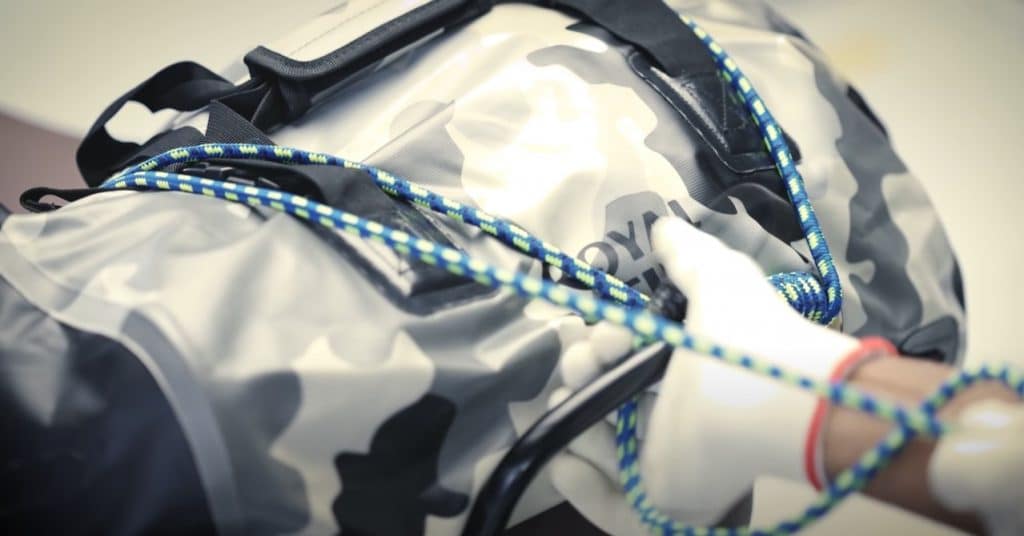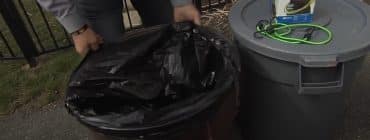Bungee cords are widespread among many people thanks to the increase in the popularity of extreme sports such as bungee jumping. However, they have been used for a long time and are used nowadays: more often, in the fields where heavy cargo is needed to be moved or in various survival scenarios. In these cases, bungee cords function as secure pickup and support for the equipment.

There exist multiple handy styles and hacks for the cords usage. They are considered to be essential elements of working with hoists, winches, and various rigging jobs, so if you are planning to deal with something like that, mind acquiring some reliable bungee straps. Moreover, if you are a member of one of the services that do such work and have to secure cargo to transport it easily, do not hesitate to read our article with the highly demanded tips and recommendations.
In this article, you will find the essential information about bungee cords, how to use them, what are the possible hacks, and the list of the best items from Amazon and other sources.
How to Use Bungee Cords

For a better understanding of how to use bungee cords, it is needed to first acquaint yourself with the construction and details of the subject itself. Bungee straps include light, strong, and easy-to-secure nylon webbing options with ratchets, slip locks, and buckles to lose or tighten the cord. Therefore, you are able to tie some things such as bags or any other cargo to the cords and pull them between two hooks or fastenings. The bungee straps themselves are designed so that you can control their lengths and fasten them according to the weight of the loads to be used.
In general, there is easy access to tying things with bungee cords thanks to the user-friendly ease of usage and durability of the cords themselves. You should not worry about the fastening of the tarps or even a tent. However, it is suitable not only for camping but for any other contact with dense clothing or heavy bags.
In the further section, you will find the most useful tricks you can employ for your bungee cords in daily life.
Some Handy Tips

These hacks are taken from the customers who usually use bungee cords in a non-trivial way, so you can notice some truly useful tips on how to use the cords to really change your life as an owner of just a couple of bungee straps.
- Tarp Storage. First and foremost, you would be able to comfortably store and use the gear, so the opening hack for you is on how to store the tarps. Find a useless PVC pipe or any other tube, clean it, and dry it. Then, it becomes a perfect place to attach your bungee straps into.
- Create a Storage with the Cords. To minimize the storage area in your house, instead of using a large container, you can easily employ the bungee straps. All you need to do is to set the fastenings on the walls so that the cords hang loosely, and you could attach balls, bags, or even paper towels inside, as it is shown in the picture below. Such a ball tower will not take much space and will ease your struggles with how to come up with storage ideas.
- Tie Down a Trash Can. It is especially useful to address such a solution to those who have contact with lots of trash bags daily in their backyard. To use it properly, make a loop around the trash can and concatenate the bungee straps and hooks, use two cords if needed. You can also tie two or more cans with the cords to hold them together during windy weather, for instance. Another useful trick is to tie the can’s lid to the can itself.
- Attach Bungee Cords to the Cars. There is no doubt a bungee cord will find its place in your vehicle to hold the shopping or other bags. In some vehicles, there are special bracings for attaching any sort of hooks, so make sure you have any to employ the tarp. Find the bracings in the back of your car and stretch the bungee cord so that it does not loosen. Complete the construction by tracking whether the cord may be unattached on road bumps.
- Tool Holder. A highly needed option is to comfortably store your tools near the working place. All you will need is a bungee cord, a wooden plank, and some bracings. Make several sections, and divide them by the bracings. Pull the cord into these bracings, and in the end, you can store all your tools at hand.
In general, it is better to use rubber bungee cords to tie them tightly. It is also wise to use the cords of bright color to notice them in the dark or to be able to find them if they are unattached from the fastening. There also exist cords of various sizes and lengths, so make sure your loads fit a particular bungee cord.
Surely, you can use bungee cords as a simple rope to carry something, however, their durability affords to employ them as more sturdy support, so you can attach heavy cargo to your truck.
Top Picks of Bungee Cords

If considering buying a bungee cord, we can only recommend Grainer inc. They produce amazing bungee cords and are the best among all registered trademarks. With their product availability, price policy, and delivery conditions, you will not have to search and filter your choice since all the needed items and promotions are right here for you.
In their shop, you will find all possible sizes and lengths for each model of a bungee cord. What is more, the gears for cords vary according to your needs, so you will also find hooks, bungee balls, and cord rolls if you need any for affordable prices.
The bungee ropes from this brand are also popular for their color variety, which means you can also search for a matching bungee cord for your truck or other pieces of gear. The storing elements are also presented on the website.
Frequently Asked Questions – FAQ
How to Attach Bungee Cord Hooks?
First, you need to cut the cord to the needed length and seal the ends, then, insert the end into the hole of the hook, and press the hook’s ring with the pliers. Make sure the connection of the ring is tight and the cord will not jump out of it with the cargo.
How to Shorten a Bungee Cord?
If it is an adjustable bungee cord, you are able to shorten it by only changing the metal regulator through the cord. However, if it is just a rope, you can cut it and seal it, after which you apply a hook following the instructions above.
Where to Buy Bungee Rope?
Bungee ropes may be found in almost any shop, including Walmart, or online on Amazon. If you want more specific models, search within shops with sports equipment or spots specialized in camping or cargo.
How to Store Bungee Cords in Truck?
In order for the cords not to tangle, it is better to store them in a tube. A great and low-budget decision is to employ a clean PVC pipe of the ropes’ length and place the hooks in the upper and lower ends of it. In this case, you will always know where all the ropes are stored and they will never be tangled or broken.
How to Make Custom Bungee Cords?
If you do not have time to search for a cord in the shops, you can make a bungee cord by yourself. Take a rubber rope and cut it to the needed length, seal the ends with a lighter, and employ the hooks to the ends of the rope. Voilá, you have a handmade bungee cord!
How Strong are Bungee Cords?
The durability and strength of the cord depend on its diameter and the material it is made of. It is better to use rubber ropes since they have the highest friction with any material, which means they will not slip off. If you need to use a cord with a heavy cargo, use the ropes of a wider diameter.
How Long Do Bungee Cords Last?
The main problem with bungee straps is that they stretch with time, so it is inevitable that after some time of usage, you will need to replace them with a new one. Obviously, the heavier the cargo, the faster the cord will wear out. Nevertheless, Bungees should be replaced at least every year, no matter what are the employed weights.
How are Bungee Cords Made?
The core of the cord is usually a set of elastic strands. Most bungee straps are covered with rubber or woven cotton or nylon which gives them extra strength and elasticity.







